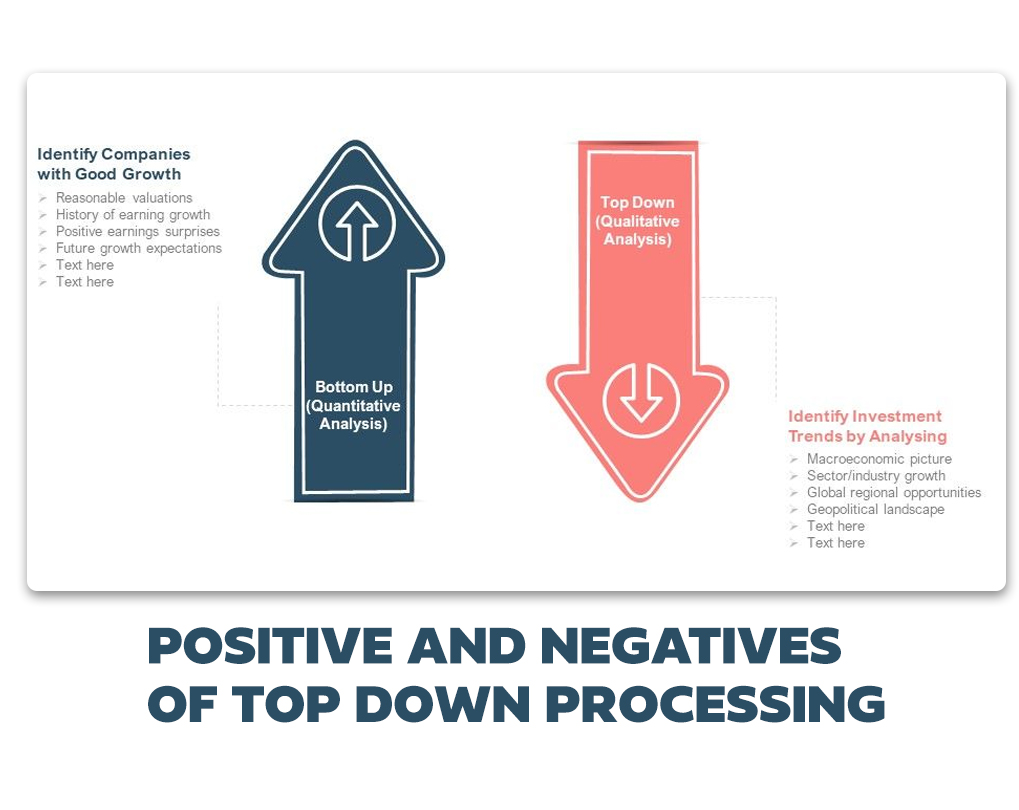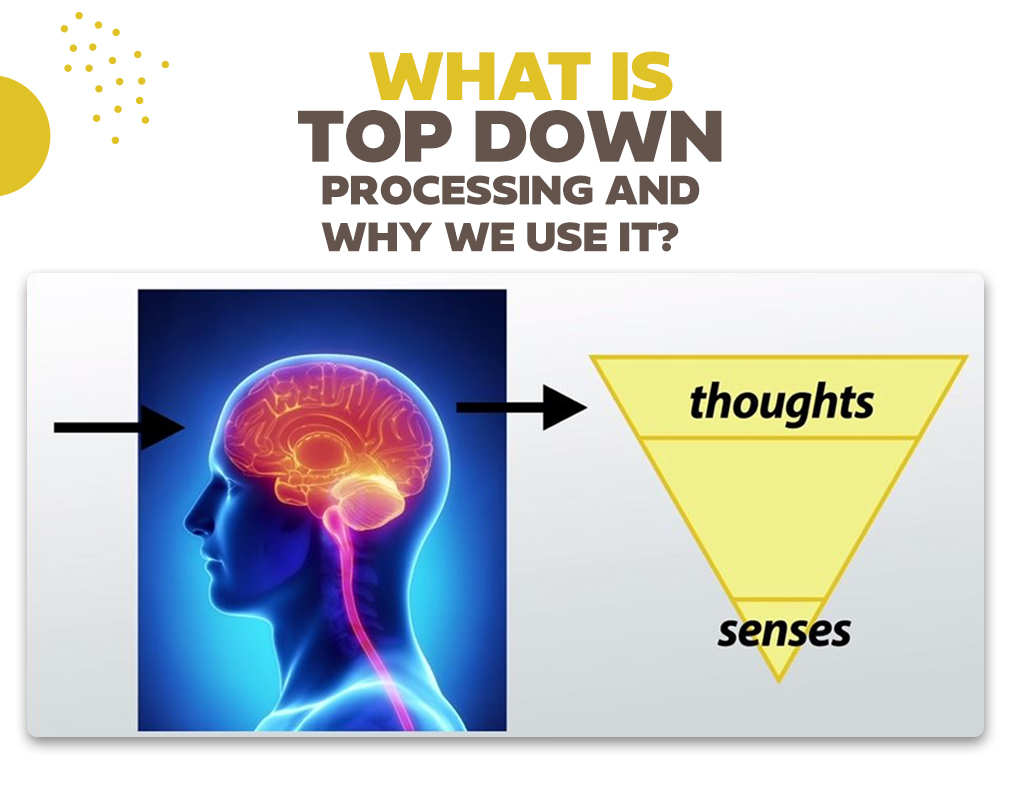Table of Contents
Top-down processing is when we make our perceptions, starting with a more extensive object, concept, or plan before working toward more detailed data. In other words, top-down processing happens when we go from the general to the specific—the big picture to the tiny details. In top-down processing, your theoretical impressions can influence the information that you gather through your five senses.
Top-Down Processing
Top-down processing is described as the development of pattern recognition through the use of contextual information. For example, you are presented with a paragraph written with difficult handwriting. It is easier to understand what the writer wants to convey if you read the whole section rather than reading the words in separate terms. The brain may perceive and understand the gist of the paragraph due to the context supplied by the surrounding words.
Gregory’s Theory
The man held for developing this take on visual perception theory is British psychologist Richard Gregory. Gregory did not coin the term top-down processing or build this idea from scratch. His approach was mainly realized as a response to Gibson, and he credits Hermann von Helmholtz as the father of this theory.
Gregory proposed that while the eye does take in many stimuli, most of it is lost by the time it reaches the brain. So we can’t possibly construct our entire perception of what’s in front of us in the direct way Gibson proposed.
To “fill in the blanks,” the brain uses hypotheses based on what it expects and what it already knows about the world. Of course, ideas are not always right. As we gather more details and focus more on different elements of what we are seeing, we could discover that our initial hypotheses aren’t real. Hence, we realize the rat isn’t just a rat, or the man isn’t just the man.
Why We Use Top-Down Processing
Top-down processing plays an essential role in our interactions with our environment. Our five senses are regularly taking in information. At any given time, we are experiencing different sights, sounds, tastes, smells, and ways things feel when we touch them. If we paid attention to each of our senses all the time, we’d never do anything else. Top-down processing enables us to streamline the process by relying on context and pre-existing knowledge to understand what we perceive. If our intellectuals didn’t employ top-down processing, our senses would overwhelm us.
Using Top-Down Processing
Top-down processing assists us to understand what our senses are perceiving in our daily lives. One area in which this has been demonstrated is reading and letter identification. Experiments have shown that when briefly presented with either a single letter or a word that contains that letter and then asked to identify which letter or word they had seen, participants could more accurately determine the word than the message. Even though the word had more visual stimuli than the letter, the phrase’s context helped the individual more accurately understand what they saw. Called the word superiority effect, this is a useful tool in everyday life.
For example, suppose you receive an important letter, but a few water drops have smeared part of the text. A few notes in different words are now just smudges. Yet, you’re still capable to read the letter in its entirety using top-down processing. You use the context of the words and sentences in which the streaks appear and your reading knowledge to comprehend the meaning of the letter’s message.
If you take a look at the image above, you’ll see a word with one letter knocked down, yet you can still recognize the word as LOVE quickly. We don’t have to carefully examine the shape of the knocked-down letter to do this. The context of the additional three letters spelling out the word is all we need to understand what we’re reading.

Positive and Negatives of Top-Down Processing
Top-down processing assists a positive function by simplifying the way we comprehend our sensory perceptions. Our environments are busy places, and we always perceive multiple things. Top-down processing allows us to shortcut the cognitive path between our perceptions and their meaning.
Part of the reason for this is that top-down processing assists us to recognize patterns. Patterns are useful because they help us understand and know how to interact with the world. For instance, when we encounter a new kind of mobile device, we use our past experiences with other mobile devices to quickly figure out which icons to touch to pull up the apps we want to interact with. Mobile devices generally follow related interaction patterns, and our prior knowledge of those patterns enables us to apply them to the new device.
On the other hand, patterns can also prevent us from perceiving things in unique ways. So we may understand the design of how to use a mobile phone, but if the manufacturer comes out with a new phone that employs unique interaction patterns, we may not be able to figure out how to use it. That’s where top-down processing can have negative results.
Our knowledge is limited and biased in specific ways. When we apply our expertise to our perceptions, it similarly limits and biases our perceptions. For example, if we’ve always used an iPhone, but are presented with a new kind of phone, our perception may be that the phone’s user experience is inferior, even if it works exactly like the iPhone.
FAQs
[wps_faq style=”classic” question=”Q: What’s an example of top-down processing?”]A: Top-down processing leads to the use of contextual information in pattern recognition. For example, difficult understanding handwriting is more comfortable when reading complete sentences than when reading single and isolated words. This is because the meaning of the neighboring words provides a context to aid understanding.[/wps_faq][wps_faq style=”classic” question=”Q: Is top-down processing a theory?”]A: Top-down processing is a theory that denies bottom-up processing, which was proposed by James J. Gibson.[/wps_faq][wps_faq style=”classic” question=”Q: What is a real-life example of bottom-up processing?”]A: Bottom-up processing takes place as it happens. For example, if you see an image of an individual letter on your screen, your eyes transmit the information to your brain, and your mind puts all of this information together.[/wps_faq][wps_faq style=”classic” question=”Q: What is another name for top-down processing?”]A: Top-down processing is also recognized as conceptually-driven processing since your perceptions are influenced by expectations, existing beliefs, and understanding.[/wps_faq]

